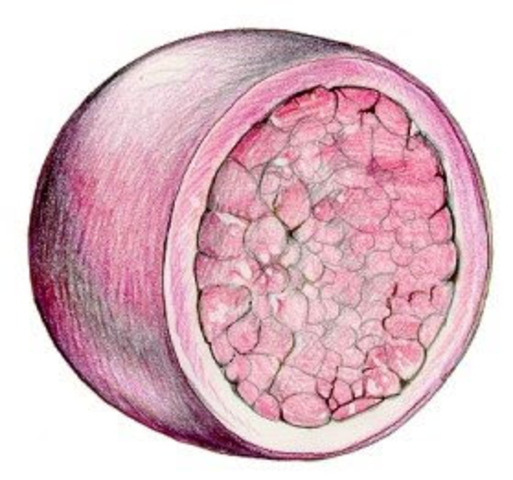 We explain what the lysosomes of a cell are, their functions, structure and other characteristics. Also, how are they formed?
We explain what the lysosomes of a cell are, their functions, structure and other characteristics. Also, how are they formed?
What are lysosomes?
Lysosomes are a type of cell organelles essential for cell digestion. They are bubbles within the cytoplasm in which different hydrolytic enzymes are contained , that is, digestive, capable of breaking down complex molecules ( proteins , lipids , nucleic acids and carbohydrates) into much simpler molecules.
Lysosomes are present in all eukaryotic cells . They are created in the cell ‘s Golgi apparatus , from vesicles whose interior is necessarily acid ( pH 5), and which is isolated from the rest of the cell so that digestive enzymes do not destroy it.
However, in some cellular processes, certain old organelles tend to fuse with lysosomes to be digested and make room for younger ones. This process is known as autophagy.
Thus, lysosomes are essential for cell maintenance, which is why they are present in absolutely all animal cells . Its role in digestion can be affected by different congenital diseases, or have harmful consequences for the body, as occurs with gout or rheumatoid arthritis.
Lysosomes were discovered in 1974 by the Belgian-born biochemist Christian de Duve (1917-2013). This finding, among others, earned him a Nobel Prize in Physiology .
It can help you: Cell cycle
Characteristics of lysosomes
Lysosomes come from vesicles that form in the Golgi apparatus.
Lysosomes are characterized by:
- Be of variable sizeand variable content too. They usually oscillate between 0.2 and 0.5 micrometers .
- They present a high concentration of specialized digestive enzymes: lipases, glycosidases, proteases and nucleases.
- Its pH is notoriously acidic, compared to that of the cytosol (which is neutral).
- They are formed in the trans network of the Golgi apparatus(TGN).
- They connect to the rest of the cell through a series of transport mechanismsthat lead from the outside of the cell to the inside, or vice versa.
Functions of lysosomes
Lysosomes function as cellular stomachs : their rich content in digestive enzymes serves to break down complex molecules into simpler, more manageable ones.
They are useful both to assimilate extracellular material (from nutrients to bacteria and harmful agents), either by phagocytosis or endocytosis, and to deal with the obsolete material of the cell itself , which through digestion is recycled to keep the organelles forever young. .
lysosome structure
The lysosome is separated from the cytoplasm by a membrane.
Lysosomes must be kept isolated from the rest of the cell, since otherwise they could digest their contents and cause cell lysis (rupture of the cell).
Therefore, the vesicles that give rise to lysosomes are formed around a simple membrane , derived from the endomembrane system of the cell, which keeps the enzymes gathered inside, also maintaining the acidic pH that suits them.
